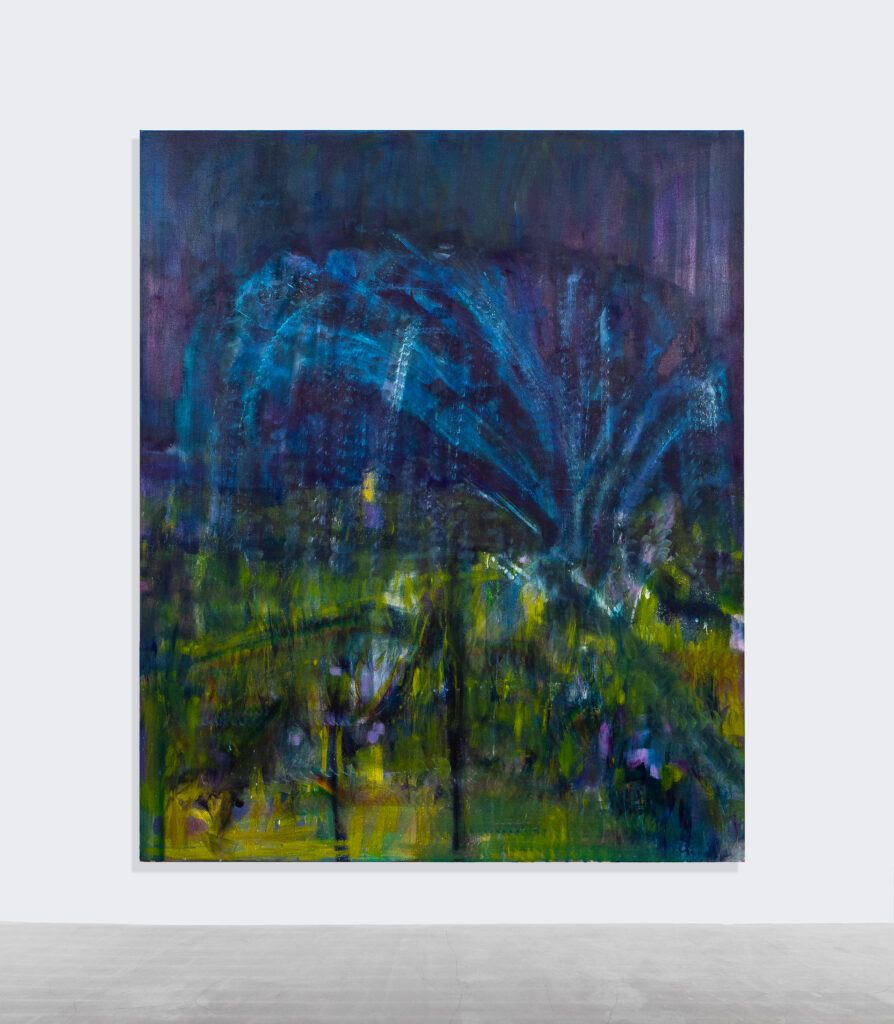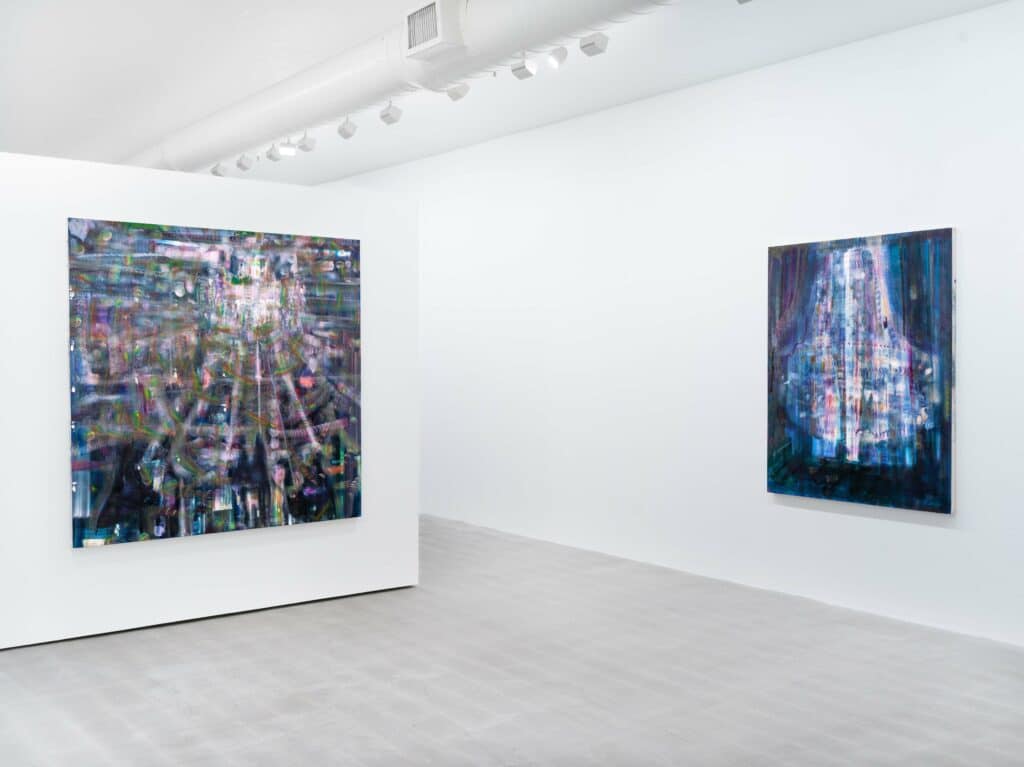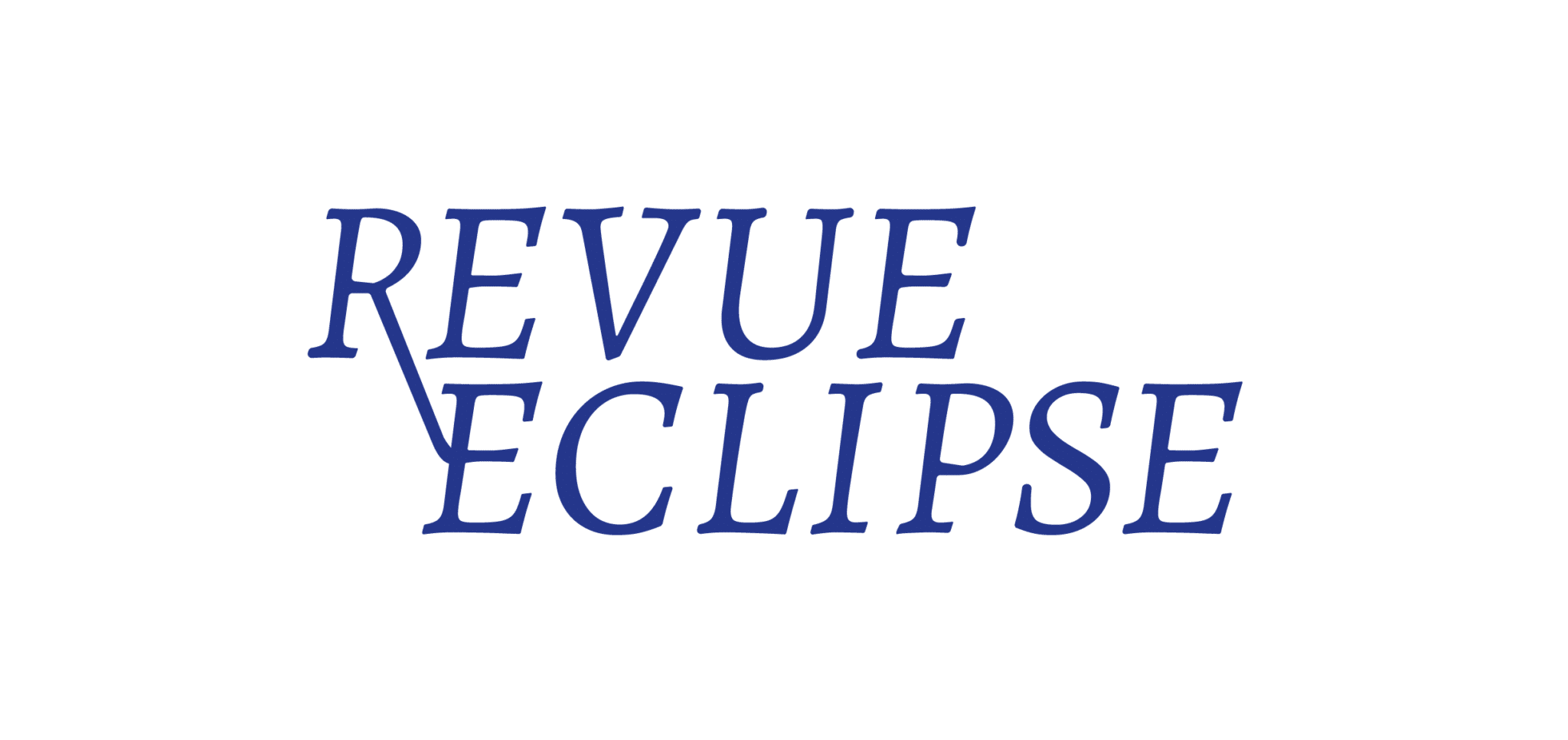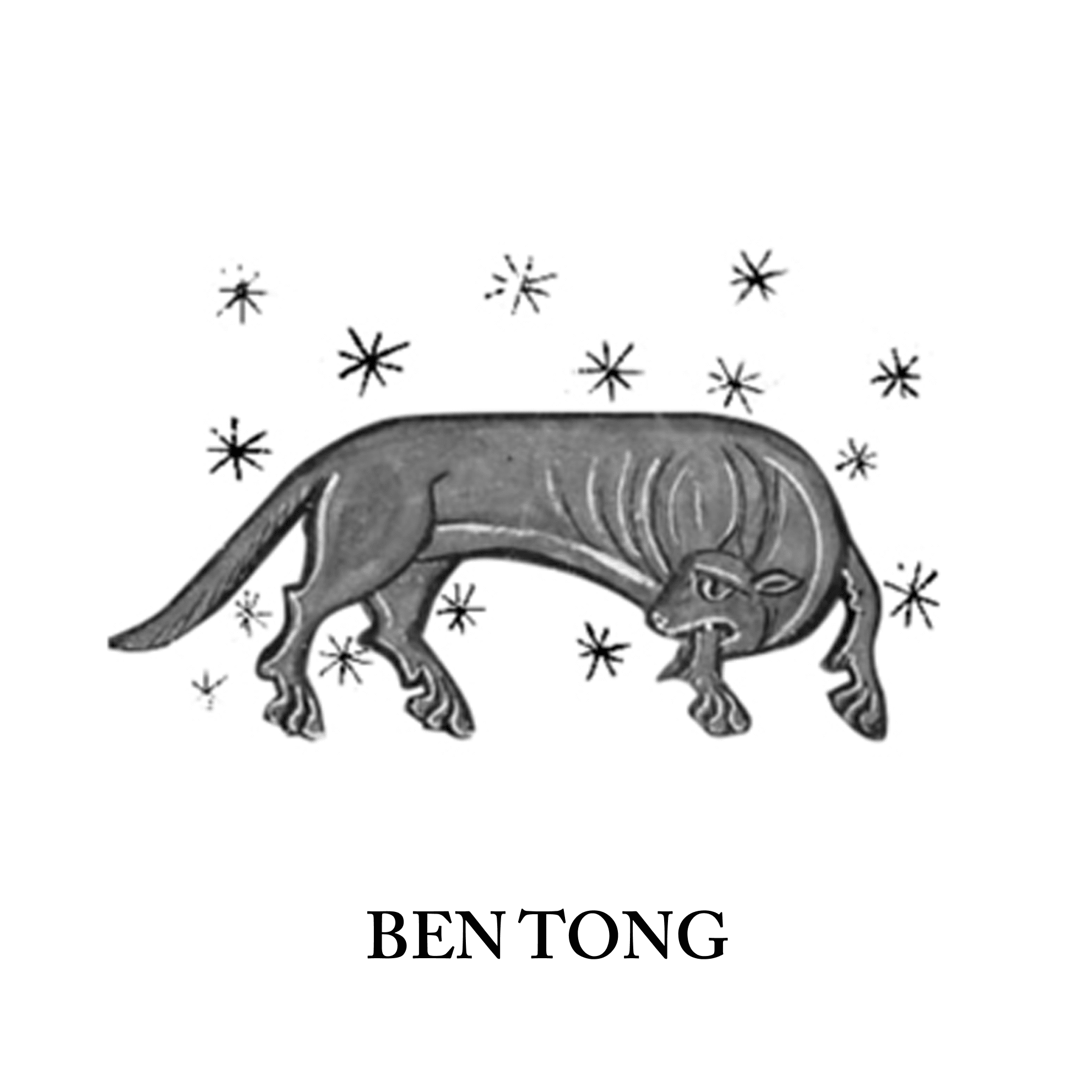
Ben Tong

Entretien du 18 Février 2023 avec le peintre Ben Tong, Los Angeles.
Ce jour-là il faisait doux à Los Angeles, pour accéder à la maison de Ben Tong, il faut gravir un grand escalier verdoyant, l’entrée est encadrée par d’immenses palmiers qui perdent leur tête dans le ciel limpide de Los Angeles. Arrivés en haut, nous sommes invités dans un jardin qui surplombe une vallée non loin de la rivière de LA. Il y règne une certaine sérénité qui sied parfaitement à son hôte calme et discret.
Le peintre a déroulé le fil de sa pensée au cours de notre conversation de manière assez naturelle et spontanée. Nous nous sommes laissés guider par sa pensée, entraîner à l’intérieur de ses réflexions et références qui ont rendu à l’issue de cet entretien, la perception de ses œuvres d’autant plus intrigante.
Les peintures de Ben Tong se situent dans un espace de l’entre-deux, ni complètement le jour, ni complètement la nuit. Elles sont saturées de couleurs éclatantes qui paradoxalement fusionnent afin de créer une obscure profondeur. Le temps et l’espace s’évanouissent, suscitant un état de confusion d’où jaillissent des sensations primaires, un espace mental inconscient dans lequel l’artiste puise sa principale source d’inspiration. Dans sa pratique même, Ben Tong souhaite retrouver cet état de l’entre-deux, faisant intervenir l’accidentel à l’intentionnel par l’usage d’outils surprenant comme des pistolets de massage, inscrivant ainsi sa pratique comme il le dit lui-même dans une histoire de la sonorité de l’outil en peinture. Les traces de cet outil forment des halos de couleurs dont la répétition floute les contours de ses sujets. Elles rappellent la circonférence des balles de Tennis que l’on retrouve jonchées sur le sol de son Studio. Dispersée un peu partout chez l’artiste, l’image de la balle rappelle l’histoire de l’Archer Zen auquel l’artiste tend à s’identifier, où afin de porter le coup juste, il faudrait ne pas se concentrer sur sa cible.
Les éléments visibles dans son studio se sont harmonieusement conjugués à ses propos, la palette saturée de couches de couleurs, le rebondi de la balle de tennis faisant écho au pistolet à massage. L’ensemble s’est éclairé sans pour autant surexposer le mystère qui entoure les compositions de Ben Tong, nous offrant davantage de strates de sens, que nous espérons, vous séduirez tout autant que nous. Il nous apparaissait comme une évidence d’entamer nos publications par ce focus sur ce peintre de la nuit et dont l’espace pictural se charge d’intuitions communes.
Voici la retranscription écrite de cet échange en anglais.
1. What are your main inspirations from the art world ?
Regarding painters and artists, I think i’m aligned most with the Modernists. I think I have an anachronistic sensibility that tends towards people working outside the present.
I love how Francis Bacon talks about painting. There’s something very direct in how he describes his process, which I like, and I think in the beginning, when I was teaching myself how to paint, I read Deleuze’s text on Bacon. And it’s funny because I had read the text before I saw the works. Deleuze’s text brought up certain types of images. And when I saw the Works, there was a mismatch. But I still went deeper into discovering Francis Bacon’s talking about his works and his interviews with David Sylvester. I like how he describes the Work; it is free of jargon. In many ways, when artists talk about their works, there are many concepts and ideas, so he’s an inspiration for me to think about my connection to the Work in the most direct way. I haven’t found anybody else who talks about Work in such a direct way.
I love the artist Trisha Donnelly. She’s fantastic because, again, just talking about directness, she’s able to get that differently. I heard her once say Something about Zen archers to hit their target; they have to not focus on the dot. She’s talking in terms of an allegory or a metaphor, but I think it’s a direct way of talking about the process of creation, of making, which is stuck with me and her works of course that are so indescribable. It’s hard to describe exactly what it is, and there’s something deeply mysterious about it that I connect to.
The Zen Archers is an important image in the zen, actually, the fact that you need to focus, but focusing means that you don’t focus, this contradiction between being in the target and being out of it. You are so used to doing it in your Spirit, but to do it well, you have to detach yourself from the movement. This zen philosophy is fascinating, isn’t it ?
There is also something else about the bullseye that is an analog for our own focus. And, of course, when you focus on one thing, you’re missing so much of the sensation of the peripheral information data. So, paradoxically, if you can sort tune into something wider than your operating with many more senses like the smell, the skin, like all sorts of data, that becomes available. I’ve played around with archery before, but I’m sure it’s a different thing on that level. I play a lot of tennis, so I think pretty similarly, in a paradoxical way, the more you think about the shot, the more you miss it, and you can’t execute. You need to be relaxed and focused on breathing and just allowing the getting-out-of-your-own-way, which also relates to painting. I’m interested in this because it is something about the body being able to do what it needs to do and your mind getting out of the way – allowing for something to happen.
Works and ideas that have this sensibility inspire me the most.
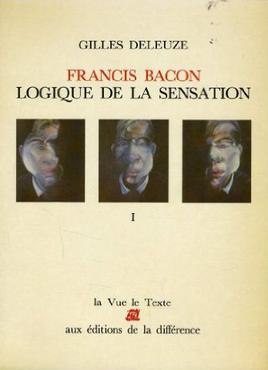
2. Are there writers, philosophers or musicians that inspire you as well ?
I love the writings of Bataille. He evokes this idea of non-productive expenditure. There’s this idea that there’s an excess of language and an excess of activity, of action, of energy; I think I can connect to that in terms of creating paintings that do not need to be instrumental, or in the service of something. I don’t think that we necessarily need to learn something from it. I think that, thinking of it as a form of pure excess activity, a language that we don’t even need to understand using the circuits of everyday language.
I feel also close to Derrida’s notion of a tactile eye he evokes in Memoirs of the Blind.
Music is also important in my practice because I’m always listening to music when I paint, it allows me to get outside of myself, and it facilitates this sort of meditative state where I’m thinking about something else.
3. The title of your new exhibition comes from a quote of the French writer Paul Valéry, “to see is to forget the name of the thing one sees”, how do your works relate to this quote ?
Kim Cordova, who curated the exhibition, came up with the title. We were thinking about what to title the show for a long time. She came across this book, written about Robert Irwin and the title of the book was Seeing is forgetting the name of the thing one sees. She found it on the floor on a walk that she was doing in Boston. So it was almost like she came across the physical version of the title, which I love.
I identify a lot with this quote. Well, this is similar to the Zen Archer Story. There is something about words and language that narrows what we see. To forget the word, you can see much more when you’re not always naming the thing.
For instance, when a cup doesn’t become a symbol, you’re looking at the contours of it and seeing the colors and shapes and perhaps something even more.
The title simply relates to that phenomenon of, I think, relaxing the faculty of language and symbols and concepts to allow for vision to bleed further into the world.
When language operates, it is easier for us to navigate through the world, see the red light, and drive a car; without that, it’s difficult to communicate and be in the world. But at the same time, there are some experiences that we can have in the world that we can suppress or relax that faculty of language to see more.
And that relates to painting, art, and to receiving the world.
It’s important for us to exist in the world, like safely drive cars and operate toaster ovens, but at the same time, there’s such a rich world that’s almost like infinite concentric circles.
If we can find a way to commune with a world outside of concepts and symbols, I think that’s part of what I love about the process of painting.
4. The first thing that strikes us when we look at your paintings is a form of vivacity that reminds us of electro music and a paradoxical blurry vibration. Could you talk about this apparent contradiction?
The effects probably have something to do with how I paint. And I’m increasingly using less traditional painting tools like paintbrushes. I’m experimenting with making marks in different ways, like using rags and adding and taking away part of the image. I’m also experimenting with mechanical percussive devices. The more traditional means of applying paint, with brushes perhaps conveys a more analog signal, whereas the rhythm of the mechanical means of applying paint signals the digital, with its frequencies and sinus rhythms.
More and more, when I’m painting, one of the sorts of goals that I have is to create something that has a property of emergence. Something that emerges and in many ways involves working with the medium’s active accidental properties. So, when I’m applying paint I’m working haphazardly, chaotically. And in some ways, I would like it to mimic the qualities of being-in-the-world – a will of communing with things that are outside of myself.
5. Can you tell us more about the technique you employ ? Sometimes it seems you work with atypical tools such as mechanical percussive device could you tell us more about it, and overall your technical particularities ?
I haven’t fully articulated this further thought on this, but thinking about tools like the paint brush or any other tool that we’ve been painting for the past thousands of years, even in cave paintings, there’s a part of the brain that is almost imagining the act on the wall as it’s happening even though the images are static.
The application of paint onto a surface using various tools perhaps dates back to our cave ancestors. Our brains have a great mimetic capacity. We recognize a kind of language of mark making, and marks can trigger different circuits in our brains – perhaps some even more reptilian or autonomic circuits.
These different techniques of making marks have different sounds, the physical color spectrum resonates with rhythms, tone and quality. We’re used to seeing brush strokes and certain types of brush Strokes; the technique of using a mechanical percussive device corresponds to a kind of sonority. Introducing a new technique allows for a new sound. I imagine it’s like going from analog to digital.
The sort of experimentation that I’m interested in and applying relates to the evolution of different sounds or different ideas, it’s almost like I’m trying to grope a new language. It’s not yet completely formed. But I’m trying a new technique that hits the brain circuits in a different way.

6. Your works seem to depict Los Angeles’ nights vibrations and personal memories linked to it; Night is suggested by artificial colors and paradoxically by lights. It seems almost like it’s a negative depiction of the darkness. Why is there a fascination for the night time and its particular colors ?
The nighttime and the darkness are particularly interesting because they have a way of provoking the imagination. Imagine when you’re out at night inside the forest, you can’t see anything, and you hear noises that evoke a lot. It’s really about triggering senses and imagination. Whereas, if you can see everything, Then it’s already all there.
I don’t ever paint using any premade black pigment. So it’s always a mixture of colors that creates darkness. All of the parts of the spectrum are, I guess, related to what I was talking about earlier. There’s something about the unconscious states. Darkness perhaps as opposed to brightness, kind of touches the unconscious in a more direct way.
I’m interested in how in the process of painting, you can suggest certain things, things I’m not completely in control of, things I don’t have complete access to, and the darkness is like a gate to it.
Colors are changed in a darkened context, there’s a tremendous amount of information inside the darkness like there is in dreams. Information that we don’t have access to in the daytime; Maybe there’s a translation there at a very visceral level.

7. The contours in your paintings are often blurred; shadows and lights seem to intertwine; could you tell us more about this blurriness?
I think there’s a difference between my intentions, the process, and how the content is being read from it. So I think you can say in one sense that the blurriness could suggest a relation to different sorts of memories residing in different brain parts. My brain, but also the viewer’s brain. That being said, formally, when I’m working on the painting, there’s not any content that I’m trying to put explicitly, like in creating a memory or a vision that I just had. If i’m working on an image that happens to evoke a kind of representational mode, the pigments’ materiality has a way of doing, kind of its own thing, which I love. So it’s out of my control. That being said; I am deciding what to take out, and how to paint it: what to leave in and what to leave out. So, going back to the unconscious, I think there’s something perhaps that I’m trying to put forward by selecting certain things in the painting in a way that does have a kind of blurriness to it which might suggest that I’m working with the content as a kind of memory.
I might not be the best person to talk to about what it means. There’s something that the process involves, something that paradoxically exists outside of myself.
So, by reaching out into a process, which I’m not completely in control of, there’s a kind of translation. The decisions that I make, the forms that I choose, and the sort of techniques that I have at hand, perhaps suggest something that’s inside of myself.
I’m not saying if there’s a direct line between what’s inside of myself and the paintings, I think, it’s something other than that. I think I’m going outside in order to go inside of myself, in order to define something new. But I think the sort of journey of doing that paradoxically ends up being about something that’s inside something that does reside somewhere inside of me, a memory. Something that I heard, something that I’m drawn towards.
8. About your process, where do your images and compositions come from ? Do you paint from photos and you have a photo base or is it just the result of memories ?
It might come from my imagination or resolved further as I encounter an image in the world or even online.There’s a tremendous bank of images in my head that I can already draw upon because these days there are so many images. Sometimes there’s an image just outside of my recognition, when I’m painting, and the paint is suggesting this thing that’s emerging. Sometimes this thing on the verge touches on a circuit of a memory.
This thing happens when you’ve just woken up from a dream, and your faculty of language is not completely back. This in-between state where you still have one foot in the unconscious world and one foot in the world, or perhaps, it’s like the state of being born. We see the light and color and don’t know the name of it yet. That’s a very particular state.
Once, I was half awakened by the sound of a bell, still half dreaming, my consciousness floated outside the window, and I could see in an alleyway, from my mind’s eye; the sound became a spinning column made of billions of particles of golden sand. It became a tunnel of sound, a tunnel of particles. And when I focused on it, it the form contracted. There’s something to be explored there in this state, not fully here nor there – a strange fifth dimension.

9. Many paintings seem to result from a hallucinatory vertigo, a loss of ground mixed with very intimate sensations; could you describe those feelings you materialize in your works ?
It has something to do with what was said before, but also with the Sublime, as Kant described it.
10. Your pallet is very specific and original; we were attracted to it the day we discovered your works; could you tell us a few words about your chromatic particularities ?
If you see my pallet in the studio, it’s a big mess. I have certain colors that I know I’m going to use as I’m painting. I’m just squeezing the paint onto the pallet and applying it to the canvas. Throughout the process even the paint labels become obscured so there becomes a point where I might have to guess which version of red I’m applying ontot the canvas. I know certain colors will be on this or that part of the painting, but the pallet itself is in a permanent state of change.
11. Tell us about a typical day of your work ?
I usually paint in morning. That’s the best time for my mental space. I typically get to the studio early in the morning and paint until noon, and then I’ll have lunch, play tennis and go for a hike with my dog, Maggie.
12. Do you have any project to share with us?
A couple of group shows, solo shows, and art fairs.
Dallas Art Fair and Frieze London with Night Gallery, then NADA New York with Jack Barrett Gallery. A solo at Kling and Back in Reykjavik in June 2023. Solo with Night Gallery early 2024.
